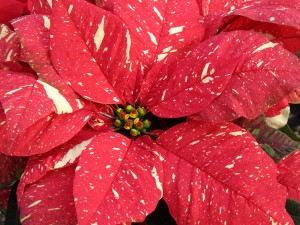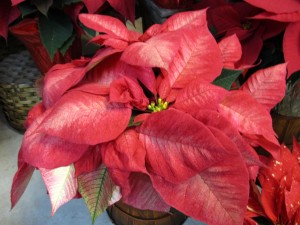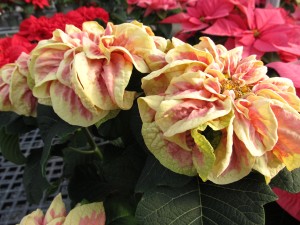Poinsettia is a gift which keeps on giving. Many gardeners save and nurture their plant to re-bloom again over the next winter holiday season. By early February the plant has likely dropped most of its bottom leaves and flower bracts. Cut back the bare stems by two-thirds and don’t be concerned about the oozing white sap. Care for the poinsettia as a house plant (watering and fertilizing) and provide light from a home window with eastern or southern exposure.
In mid to late March repot into a container, 1 – 1 ½ times larger. Move the plant outdoors on warm spring days when temps are above 50°F and back indoors on cool nights. The plant will spend most of the spring and all summer outdoors where it will easily double or triple in size with a regular watering and fertilizing. Cutback the shoot tips once or twice during the summer to increase branching.
In early fall, your poinsettia moves back indoors on cool evenings (below 50°F) and kept isolated in a room which is not lighted in the evening hours. Poinsettia requires 6 weeks of uninterrupted 12- hour nights to initiate flowers and colorful bracts. The plant receives adequate light during the daytime hours and watering and feeding continues.
By mid-November, small flower buds form and the upper leaves (bracts) begin to color up and increase in size. By the next winter holiday season your poinsettia will decorate your home once again.




 Posted in
Posted in 
